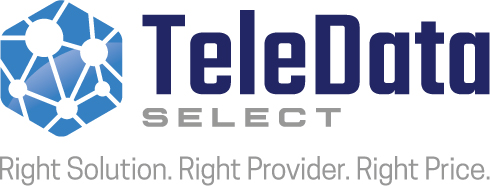What You Need to Know and How to Save
The era of POTS lines, or “Plain Old Telephone Services,” is fading into history. The reason behind this shift is simple: the technology that once powered these services is no longer financially viable for telecom providers. If you can recall the days of copper phone lines connecting to your home or business, linking up with fax machines, business phone systems, elevator lines, or even basic wireless handsets, you’re not alone.
In 2022, the Federal Communications Commission (FCC) implemented a change that allowed carriers such as ATT, Verizon, and others to begin phasing out old legacy copper networks. This move inevitably affected the existence of plain old telephone lines that relied on this outdated copper infrastructure. By the time 2025-2030 rolls around, most telecom service companies have plans to retire this service altogether, transitioning to IP-based phone service or VoIP. Many businesses are finding themselves strongly encouraged, and in some cases, coerced by their telecom service providers to switch to alternative solutions.
While the idea of this transition may seem reasonable, there remain countless POTs lines or plain old telephone lines still in use today. These lines support a variety of critical functions, including fax machines, elevators, security systems, and even many households. Many business customers have watched in dismay as their phone bills for basic line services have skyrocketed, given that these lines are no longer a priority for major telecom carriers. POTs lines still dot the landscape of the United States, yet companies are grappling with uncertainty regarding where to find solutions and assistance.
Navigating the maze of options for customers in this changing landscape can be daunting, and determining where to seek help can be equally frustrating.
To help you navigate this transition, here are some key considerations:
- Conduct an Audit: Begin by auditing your existing POT lines or PSTN infrastructure. Understand what you currently have in place.
- Review Your Telecom Bills: Seek assistance to review your telecom bills; this can help identify POTs lines and any potential overcharges.
- Inventory Your Copper Lines: Determine where your copper lines are physically located or consider hiring someone to perform an inventory audit.
- Evaluate Your IT Network: Assess your IT network and explore options like cellular backup for alarm or fire systems.
- Sunset Plans: Find out when your telecom provider intends to phase out or discontinue your POTs lines.
- Engage Resources: Consider enlisting the support of a resource or partner to ensure a successful migration.
- Consult Experts: Reach out to consultants with expertise in telecom transitions; they can provide valuable guidance and assistance.
The transition away from Plain Old Telephone Services may seem complex, but with the right strategy and support, you can make this shift efficiently and save on costs while ensuring your communication needs are met in the modern era.
TeleData Select offers a whole range of services that will help you meet your business goals. Starting with a complimentary review of your current telecommunication bills to identify errors and find opportunities for savings, better service and more functionality. We also offer project management for new service implementation and infrastructure installs, including fiber and low voltage cabling. Call us at 404-257-1502 to discuss your current Telecom Service Solution and what you would like to get out of it. Or send us a note via This Link to start a no obligation discussion of your specific business technology needs.
 John Hagan is President of TeleData Select, a Telecommunications Consultant located in Atlanta, Ga serving customers throughout the US and overseas. His company provides business solutions for voice, data, mobile and cloud solutions for both large and small businesses. Contact John or his team for a complimentary telecom audit to make sure you’re getting the best value for communication services. The savings you receive could offset the cost of purchasing a new Hosted or Premise based solution.
John Hagan is President of TeleData Select, a Telecommunications Consultant located in Atlanta, Ga serving customers throughout the US and overseas. His company provides business solutions for voice, data, mobile and cloud solutions for both large and small businesses. Contact John or his team for a complimentary telecom audit to make sure you’re getting the best value for communication services. The savings you receive could offset the cost of purchasing a new Hosted or Premise based solution.





0 Comments